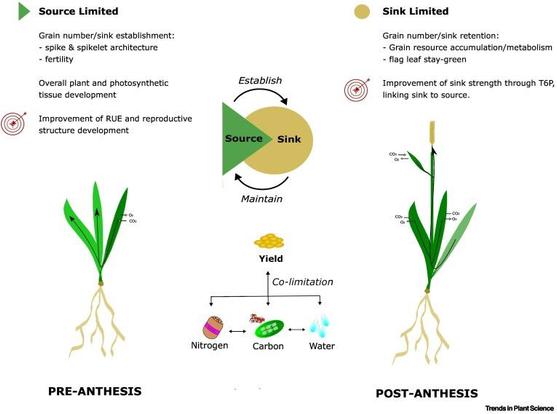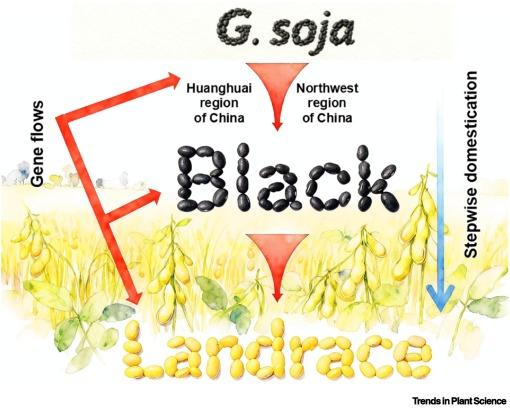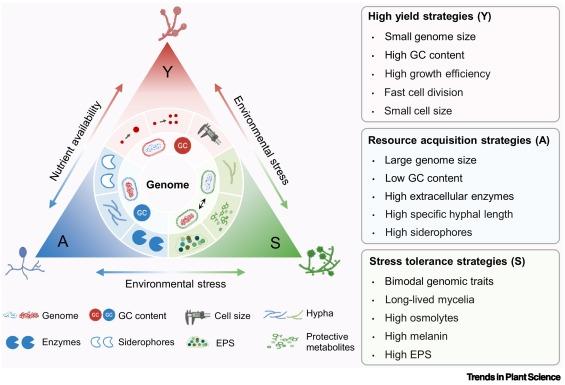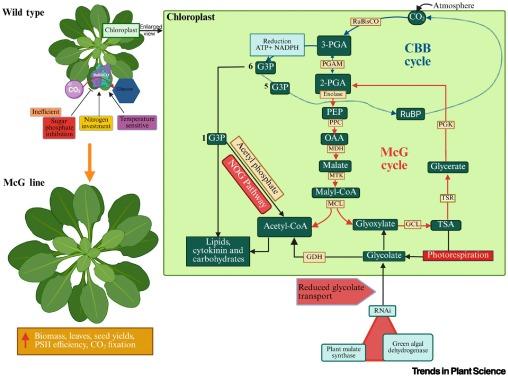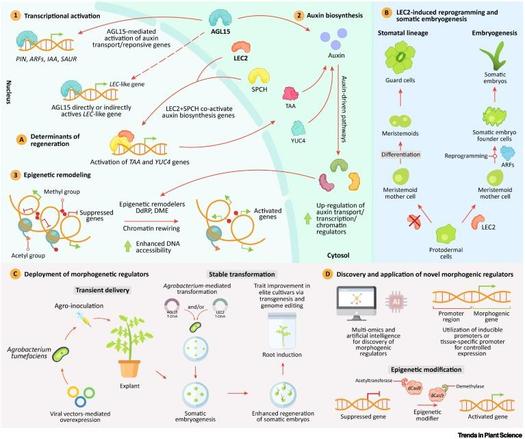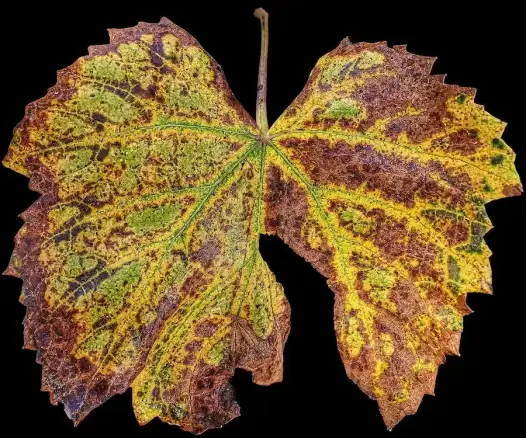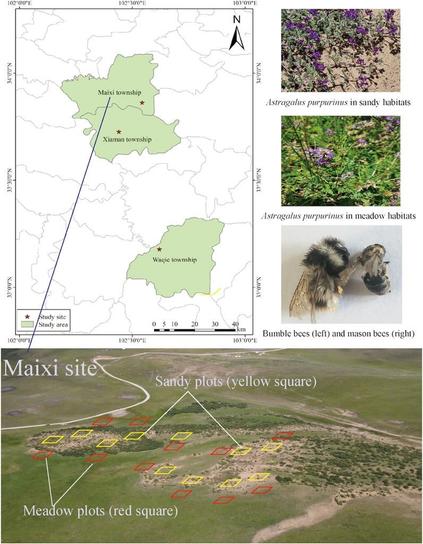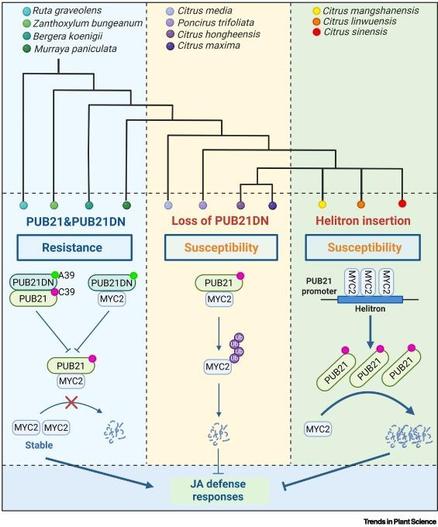Improving photosynthesis in agricultural environments https://www.cell.com/trends/plant-science/fulltext/S1360-1385(25)00330-9?rss=yes&utm_source=dlvr.it&utm_medium=mastodon #plantscience
#PlantScience
Soybean's evolutionary roadmap to breeding https://www.cell.com/trends/plant-science/fulltext/S1360-1385(25)00349-8?rss=yes&utm_source=dlvr.it&utm_medium=mastodon #plantscience
Understanding and overcoming protein production bottlenecks in plants https://www.cell.com/trends/plant-science/fulltext/S1360-1385(25)00329-2?rss=yes&utm_source=dlvr.it&utm_medium=mastodon #plantscience
Fungal genomic trait-based ecological strategies mediate plant productivity https://www.cell.com/trends/plant-science/fulltext/S1360-1385(25)00327-9?rss=yes&utm_source=dlvr.it&utm_medium=mastodon #plantscience
Modelling the productivity of opportunity crops across Africa under climate change in support of the Vision for Adapted Crops and Soils
https://www.nature.com/articles/s41477-025-02157-9 via Nature Plants
#PlantScience #APMIP
Dual-pathway CO2 fixation promotes growth in Arabidopsis https://www.cell.com/trends/plant-science/fulltext/S1360-1385(25)00351-6?rss=yes&utm_source=dlvr.it&utm_medium=mastodon #plantscience
Modelling the historic distribution and habitat of American chestnut (Castanea dentata) in Georgia, USA using edaphic and landform predictors
by Joyce Klaus and Nathan Klaus
https://doi.org/10.21425/fob.18.161937 via Frontiers of Biogeography, the flagship journal of The International Biogeography Society
#PlantScience
Molecular approaches to increasing plant root carbon https://www.cell.com/trends/plant-science/fulltext/S1360-1385(25)00328-0?rss=yes&utm_source=dlvr.it&utm_medium=mastodon #plantscience
Understanding the genetics of cotton regeneration to help improve cotton https://www.cell.com/trends/plant-science/fulltext/S1360-1385(25)00350-4?rss=yes&utm_source=dlvr.it&utm_medium=mastodon #plantscience
♻️ Fine-scale genetic differentiation in the bee-specialized Antirrhinum charidemi covaries more strongly with spatial isolation than with corolla colour by Myriam Heuertz and co-authors.
LEC2 unlocks totipotency by unlocking chromatin https://www.cell.com/trends/plant-science/fulltext/S1360-1385(25)00352-8?rss=yes&utm_source=dlvr.it&utm_medium=mastodon #plantscience
📢 We're Now Accepting Commentaries
These are short discussion of topical issues, such as a recently published study or scientific issue focused on computational algorithms, software, models, frameworks, engines, languages and other tools that advance plant sciences.
There are no charges for commentaries, but please submit a pre-submission inquiry. #PlantScience
Molecular 'switch' that controls aging of plant leaves discovered
A joint research team has discovered a new molecular switch that determines when plant leaves begin to age. The research team has identified for the first time a new mechanism in which RNA made from the nucleus moves to chloroplasts and regulates the aging of plant leaves.
https://globalplantcouncil.org/molecular-switch-that-controls-aging-of-plant-leaves-discovered/ via DGIST #PlantScience
Image: Leaf, Fall, Vine leaves image. Free for use. Credit: anaterate / Pixabay
♻️ Comparative plastomes of five Psittacanthus species: genome organization, structural features, and patterns of pseudogenization and gene loss by Saddan Morales-Saldaña and co-authors.
The #eukaryotic OMEGA-Fanzor system allows for precise and efficient #genome #editing due to its compact size and lower collateral activity, but its use in #plants has been limited-until now! Read the latest findings in this #FreeAccess Brief Communication!
https://doi.org/10.1111/jipb.70049
@WileyLifeSci
#PlantScience #JIPB #botany
🌸 New article in @AoBP explores how tiny habitat differences shape reproduction in Astragalus purpurinus on the Tibetan Plateau, and shows microhabitat heterogeneity can drive striking divergence within a single species.
Phased telomere-to-telomere super-pangenome: definitive reference genome in plants https://www.cell.com/trends/plant-science/fulltext/S1360-1385(25)00324-3?rss=yes&utm_source=dlvr.it&utm_medium=mastodon #plantscience
Fighting citrus Huanglongbing with evolutionary principles https://www.cell.com/trends/plant-science/fulltext/S1360-1385(25)00326-7?rss=yes&utm_source=dlvr.it&utm_medium=mastodon #plantscience
When there's a #fungus amungus, soybeans know what to do...
Find out how #soybean plants respond to #chitin oligosaccharides and initiate immune signaling in response to fungal pathogens in this new, #OpenAccess study by Sun et al.
https://doi.org/10.1111/jipb.70042
@wileylifesci.bsky.social
#PlantScience
♻️ Heterostylous plants in an era of global change: a review on the consequences of habitat loss and fragmentation by Marianne Kivastik and co-authors.
